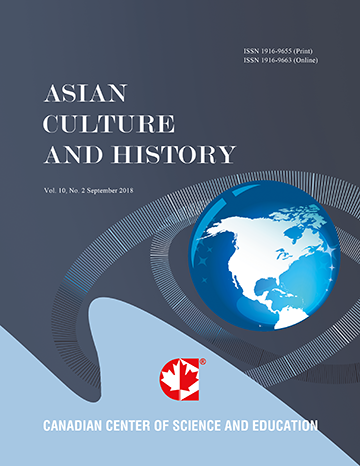Factor-Based Quantitative Comparison Analysis of the Inheritance of Intangible Cultural Heritage: A Case Study of Kunqu Opera between Chinese Mainland and Taiwan
- Run Zhao
Abstract
In 1940s, the Kuomintang (KMT) retreated to Taiwan, along with a lot of amateur artists accomplished in singing and dancing of Kunqu Opera. Due to unlike and separate social environments, Kunqu Opera developed into two different ways in Taiwan and Chinese mainland since then. In contrast with Taiwan’s choice to maintain the tradition of Kunqu Opera, especially that of 1930s as much as possible, Chinese mainland turns to modernize this art to cater to social trends. This paper analyses two versions of the same scene “Broken Bridge” (断桥) from Taiwan and Chinese mainland in spoken language, melody, literary form of lyrics, dance, stage set and costumes to try to find the factors that are not changed, which can be understood as the core factors with inherited cultural values of the intangible cultural heritage. Based on these core factors, the effective protection is possible. This research shows that although Kunqu Opera in Chinese mainland is gradually changing, particularly turning realistic as opposed to the one keeping impressionistic in Taiwan, there are some factors almost untransformed: the melody (kunqiang), literary form of lyrics (qupai style), costumes evolving from the dress of Ming dynasty. An effective protection method of Kunqu Opera should put emphasis on these factors.
- Full Text:
 PDF
PDF
- DOI:10.5539/ach.v12n2p23
Journal Metrics
Google-based Impact Factor (2017): 5.42
h-index (January 2018): 11
i10-index (January 2018): 21
h5-index (January 2018): 6
h5-median (January 2018): 9
Index
- Academic Journals Database
- CNKI Scholar
- COPAC
- EconPapers
- Elektronische Zeitschriftenbibliothek (EZB)
- Excellence in Research for Australia (ERA)
- Genamics JournalSeek
- Google Scholar
- Infotrieve
- LOCKSS
- MIAR
- NewJour
- Open J-Gate
- PKP Open Archives Harvester
- Publons
- RePEc
- Scilit
- SHERPA/RoMEO
- Standard Periodical Directory
- Technische Informationsbibliothek (TIB)
- The Keepers Registry
- Universe Digital Library
- WorldCat
Contact
- Ivan YongEditorial Assistant
- ach@ccsenet.org
